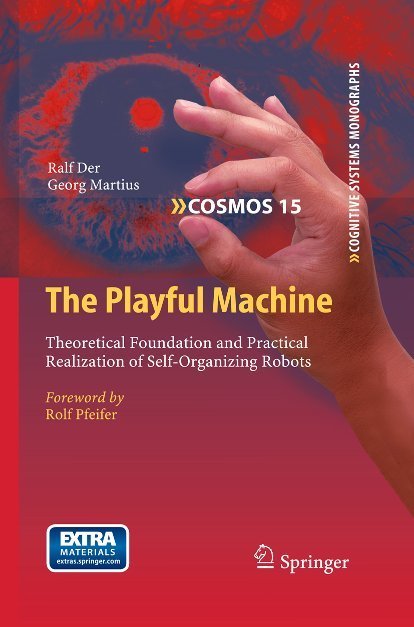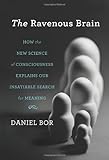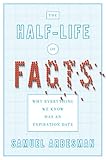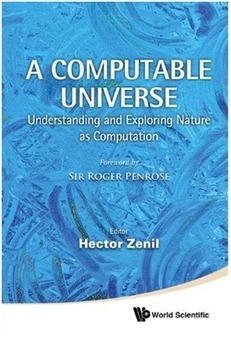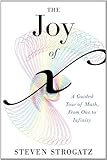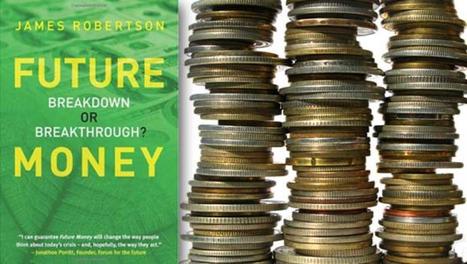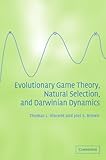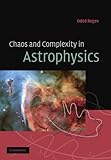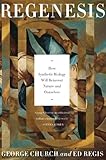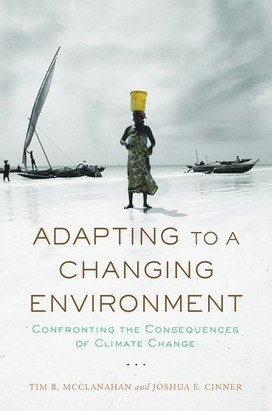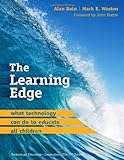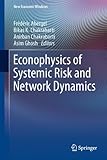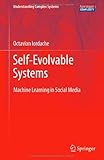 Your new post is loading...
 Your new post is loading...

|
Scooped by
Complexity Digest
October 8, 2012 11:51 AM
|
Slime mould Physarum polycephalum is a monstrous single cell well known for its task-solving abilities — solves computational geometry and logical problems, navigates robots and generates music. The slime mould could also build motorways, highways and expressways. It is used to analyse transport networks of Africa, Australia, Belgium, Brazil, Canada, China, Germany, Iberia, Italy, Malaysia, Mexico, The Netherlands, UK and USA. The largest cities are represented by oat flakes and the slime mould is inoculated in a capital. When all oat flakes are covered by the slime mould, the structure of the protoplasmic networks formed are analyzed. In the laboratory experiments and theoretical analyses, intriguing country-specific properties of the motorway networks are uncovered and compared with the man-made and slime mould networks. They are studied as proximity graphs, leading to hierarchies of complexity and bio-rationality of the motorways. The book will inspire novel and original thoughts, paradigms and approaches for re-evaluation of historical findings on the emergence of ancient roads and will help to design future transcontinental pathways. The book is self-contained and does not require any special training or knowledge. This lavishly illustrated text will be appreciated by readers from all walks of life.

|
Scooped by
Complexity Digest
September 28, 2012 6:21 PM
|
Autonomous robots may become our closest companions in the near future. While the technology for physically building such machines is already available today, a problem lies in the generation of the behavior for such complex machines. Nature proposes a solution: young children and higher animals learn to master their complex brain-body systems by playing. Can this be an option for robots? How can a machine be playful? The book provides answers by developing a general principle---homeokinesis, the dynamical symbiosis between brain, body, and environment---that is shown to drive robots to self- determined, individual development in a playful and obviously embodiment- related way: a dog-like robot starts playing with a barrier, eventually jumping or climbing over it; a snakebot develops coiling and jumping modes; humanoids develop climbing behaviors when fallen into a pit, or engage in wrestling-like scenarios when encountering an opponent. The book also develops guided self-organization, a new method that helps to make the playful machines fit for fulfilling tasks in the real world. The book provides two levels of presentation. Students and scientific researchers interested in the field of robotics, self-organization and dynamical systems theory may be satisfied by the in-depth mathematical analysis of the principle, the bootstrapping scenarios, and the emerging behaviors. But the book additionally comes with a robotics simulator inviting also the non- scientific reader to simply enjoy the fabulous world of playful machines by performing the numerous experiments. "The Playful Machine" by Ralf Der and Georg Martius, Springer http://playfulmachines.com

|
Suggested by
AntonJ
September 21, 2012 10:46 PM
|
Consciousness is our gateway to experience: it enables us to recognize Van Gogh’s starry skies, be enraptured by Beethoven’s Fifth, and stand in awe of a snowcapped mountain. Yet consciousness is subjective, personal, and famously difficult to examine: philosophers have for centuries declared this mental entity so mysterious as to be impenetrable to science. In The Ravenous Brain, neuroscientist Daniel Bor departs sharply from this historical view, and builds on the latest research to propose a new model for how consciousness works. Bor argues that this brain-based faculty evolved as an accelerated knowledge gathering tool. Consciousness is effectively an idea factory—that choice mental space dedicated to innovation, a key component of which is the discovery of deep structures within the contents of our awareness. This model explains our brains’ ravenous appetite for information—and in particular, its constant search for patterns. Why, for instance, after all our physical needs have been met, do we recreationally solve crossword or Sudoku puzzles? Such behavior may appear biologically wasteful, but, according to Bor, this search for structure can yield immense evolutionary benefits—it led our ancestors to discover fire and farming, pushed modern society to forge ahead in science and technology, and guides each one of us to understand and control the world around us. But the sheer innovative power of human consciousness carries with it the heavy cost of mental fragility. Bor discusses the medical implications of his theory of consciousness, and what it means for the origins and treatment of psychiatric ailments, including attention-deficit disorder, schizophrenia, manic depression, and autism. All mental illnesses, he argues, can be reformulated as disorders of consciousness—a perspective that opens up new avenues of treatment for alleviating mental suffering. A controversial view of consciousness, The Ravenous Brain links cognition to creativity in an ingenious solution to one of science’s biggest mysteries.

|
Suggested by
AntonJ
September 21, 2012 10:45 PM
|
In this provocative, startling book, Robert D. Kaplan, the bestselling author of Monsoon and Balkan Ghosts, offers a revelatory new prism through which to view global upheavals and to understand what lies ahead for continents and countries around the world.
In The Revenge of Geography, Kaplan builds on the insights, discoveries, and theories of great geographers and geopolitical thinkers of the near and distant past to look back at critical pivots in history and then to look forward at the evolving global scene. Kaplan traces the history of the world’s hot spots by examining their climates, topographies, and proximities to other embattled lands. The Russian steppe’s pitiless climate and limited vegetation bred hard and cruel men bent on destruction, for example, while Nazi geopoliticians distorted geopolitics entirely, calculating that space on the globe used by the British Empire and the Soviet Union could be swallowed by a greater German homeland.
Kaplan then applies the lessons learned to the present crises in Europe, Russia, China, the Indian subcontinent, Turkey, Iran, and the Arab Middle East. The result is a holistic interpretation of the next cycle of conflict throughout Eurasia. Remarkably, the future can be understood in the context of temperature, land allotment, and other physical certainties: China, able to feed only 23 percent of its people from land that is only 7 percent arable, has sought energy, minerals, and metals from such brutal regimes as Burma, Iran, and Zimbabwe, putting it in moral conflict with the United States. Afghanistan’s porous borders will keep it the principal invasion route into India, and a vital rear base for Pakistan, India’s main enemy. Iran will exploit the advantage of being the only country that straddles both energy-producing areas of the Persian Gulf and the Caspian Sea. Finally, Kaplan posits that the United States might rue engaging in far-flung conflicts with Iraq and Afghanistan rather than tending to its direct neighbor Mexico, which is on the verge of becoming a semifailed state due to drug cartel carnage.

|
Suggested by
AntonJ
September 12, 2012 4:56 PM
|
Facts change all the time. Smoking has gone from doctor recommended to deadly. We used to think the Earth was the center of the universe and that Pluto was a planet. For decades, we were convinced that the brontosaurus was a real dinosaur. In short, what we know about the world is constantly changing. But it turns out there’s an order to the state of knowledge, an explanation for how we know what we know. Samuel Arbesman is an expert in the field of scientometrics—literally the science of science. Knowledge in most fields evolves systematically and predictably, and this evolution unfolds in a fascinating way that can have a powerful impact on our lives. Just as we know that a chunk of uranium can break down in a measurable amount of time—a radioactive half-life—so too any given field’s change in knowledge can be measured concretely. We can know when facts in aggregate are obsolete, the rate at which new facts are created, and even how facts spread. Arbesman takes us through a wide variety of fields, including those that change quickly, over the course of a few years, or over the span of centuries. He shows that much of what we know consists of “mesofacts”—facts that change at a middle timescale, often over a single human lifetime. Throughout, he offers intriguing examples about the face of knowledge: what English majors can learn from a statistical analysis of The Canterbury Tales, why it’s so hard to measure a mountain, and why so many parents still tell kids to eat their spinach because it’s rich in iron. The Half-life of Facts is a riveting journey into the counterintuitive fabric of knowledge. It can help us find new ways to measure the world while accepting the limits of how much we can know with certainty.

|
Rescooped by
Complexity Digest
from Global Brain
September 12, 2012 4:51 PM
|
This volume, with a foreword by Sir Roger Penrose, discusses the foundations of computation in relation to nature.
Via Spaceweaver

|
Suggested by
AntonJ
September 7, 2012 1:28 AM
|
A world-class mathematician and regular contributor to the New York Times hosts a delightful tour of the greatest ideas of math, revealing how it connects to literature, philosophy, law, medicine, art, business, even pop culture in ways we never imagined
Did O.J. do it? How should you flip your mattress to get the maximum wear out of it? How does Google search the Internet? How many people should you date before settling down? Believe it or not, math plays a crucial role in answering all of these questions and more.
Math underpins everything in the cosmos, including us, yet too few of us understand this universal language well enough to revel in its wisdom, its beauty — and its joy. This deeply enlightening, vastly entertaining volume translates math in a way that is at once intelligible and thrilling. Each trenchant chapter of The Joy of x offers an “aha!” moment, starting with why numbers are so helpful, and progressing through the wondrous truths implicit in π, the Pythagorean theorem, irrational numbers, fat tails, even the rigors and surprising charms of calculus. Showing why he has won awards as a professor at Cornell and garnered extensive praise for his articles about math for the New York Times, Strogatz presumes of his readers only curiosity and common sense. And he rewards them with clear, ingenious, and often funny explanations of the most vital and exciting principles of his discipline.

|
Scooped by
Complexity Digest
August 31, 2012 11:12 AM
|
Edward O. Wilson is not afraid to ask big questions—questions that religions, the creative arts, and philosophy have wrestled with for centuries. What is it that makes humans what they are? How did our human condition develop? How did nature give rise to something so unusual as ourselves—a species that feels empathy and guilt, cares for the old and sick, and tries to intellectually understand itself and its origins—with our languages, religions, arts, and cultures? With The Social Conquest of Earth, Wilson endeavors to uncover the creation story of humanity. (...) Wilson suggests visualizing the evolution of a species as a journey through a maze presented by the environment, a maze that can itself change with time. (...) Wilson argues that a multilevel selection perspective offers the best approach to understanding the human condition. A Creation Story for Humanity
Rudolf Griss Science 31 August 2012:
Vol. 337 no. 6098 p. 1041
http://dx.doi.org/10.1126/science.1225640

|
Rescooped by
Complexity Digest
from The Next Edge
August 27, 2012 7:53 AM
|
James Robertson has been described as the ‘grandfather of green economics’; he might equally be called the father of Renegade Economics: over the last three decades nobody has been more eloquent or straightforward in their advocacy of a new economic order. Robertson's main focus has been the money system. Many years ago he identified the means by which money is created as the principal culprit in our failure to create a more just and sustainable society. In his new book, Future Money: Breakdown or Breakthrough? he summarises the problems with current monetary arrangements and offers an alternative which could set civilization on a much happier, healthier and long-lived course.
Via David Hodgson, Elle D'Coda, ddrrnt

|
Suggested by
AntonJ
August 22, 2012 3:03 PM
|
All of life is a game, and evolution by natural selection is no exception. The evolutionary game theory developed in this 2005 book provides the tools necessary for understanding many of nature's mysteries, including co-evolution, speciation, extinction and the major biological questions regarding fit of form and function, diversity, procession, and the distribution and abundance of life. Mathematics for the evolutionary game are developed based on Darwin's postulates leading to the concept of a fitness generating function (G-function). G-function is a tool that simplifies notation and plays an important role developing Darwinian dynamics that drive natural selection. Natural selection may result in special outcomes such as the evolutionarily stable strategy (ESS). An ESS maximum principle is formulated and its graphical representation as an adaptive landscape illuminates concepts such as adaptation, Fisher's Fundamental Theorem of Natural Selection, and the nature of life's evolutionary game.

|
Suggested by
AntonJ
August 22, 2012 3:03 PM
|
The spectacular success of the scientific enterprise over the last four hundred years has led to the promise of an all encompassing vision of the natural world. In this elegant picture, everything we observe is based upon just a few fundamental processes and entities. The almost infinite variety and complexity of the world is thus the product of emergence. But the concept of emergence is fraught with controversy and confusion. This book ponders the question of how emergence should be understood within the scientific picture, and whether a complete vision of the world can be attained that includes consciousness.

|
Suggested by
AntonJ
August 22, 2012 3:03 PM
|
The discipline of nonlinear dynamics has developed explosively in all areas of physics over the last two decades. This comprehensive primer summarizes the main developments in the mathematical theory of dynamical systems, chaos, pattern formation and complexity. An introduction to mathematical concepts and techniques is given in the first part of the book, before being applied to stellar, interstellar, galactic and large scale complex phenomena in the Universe. Oded Regev demonstrates the possible application of ideas including strange attractors, Poincaré sections, fractals, bifurcations, and complex spatial patterns, to specific astrophysical problems.

|
Suggested by
AntonJ
August 10, 2012 1:02 PM
|
From one of the most original and influential neuroscientists at work today, here is an exploration of consciousness unlike any other—as told by Galileo, who opened the way for the objectivity of science and is now intent on making subjective experience a part of science as well.
Galileo’s journey has three parts, each with a different guide. In the first, accompanied by a scientist who resembles Francis Crick, he learns why certain parts of the brain are important and not others, and why consciousness fades with sleep. In the second part, when his companion seems to be named Alturi (Galileo is hard of hearing; his companion’s name is actually Alan Turing), he sees how the facts assembled in the first part can be unified and understood through a scientific theory—a theory that links consciousness to the notion of integrated information (also known as phi). In the third part, accompanied by a bearded man who can only be Charles Darwin, he meditates on how consciousness is an evolving, developing, ever-deepening awareness of ourselves in history and culture—that it is everything we have and everything we are.
Not since Gödel, Escher, Bach has there been a book that interweaves science, art, and the imagination with such originality. This beautiful and arresting narrative will transform the way we think of ourselves and the world.
|

|
Scooped by
Complexity Digest
September 30, 2012 6:31 PM
|
An interdisciplinary volume on how computers are reshaping creativity in art and science. Computers, the Internet, and a whole array of new technologies are fundamentally changing our world. While the last decade has seen the rise of social computing, we see the next decade as one where computers will bring important changes to our understanding of creativity and the role computers can take in the creative process. Computers make us globally connected. They allow immediate access to more information than at any other time in human history. But does this new technology make us more creative? Can we build machines that are independently creative or that significantly extend our creativity into new domains? Do collaborative relationships between humans and computers enhance or curtail creative expression? These questions, and many more, are addressed in this interdisciplinary book which introduces new theories and ideas on creativity from the perspectives of science and art. Computers and Creativity
Edited by Jon McCormack and Mark d'Inverno
430p. Hardcover, 2012. Published by Springer, Berlin.
With a foreword by Margaret A. Boden http://www.computers-and-creativity.info

|
Suggested by
AntonJ
September 21, 2012 10:47 PM
|
Imagine a future in which human beings have become immune to all viruses, in which bacteria can custom-produce everyday items, like a drinking cup, or generate enough electricity to end oil dependency. Building a house would entail no more work than planting a seed in the ground. These scenarios may seem far-fetched, but pioneering geneticist George Church and science writer Ed Regis show that synthetic biology is bringing us ever closer to making such visions a reality. In Regenesis, Church and Regis explorethe possibilities—and perils—of the emerging field of synthetic biology. Synthetic biology, in which living organisms are selectively altered by modifying substantial portions of their genomes, allows for the creation of entirely new species of organisms. Until now, nature has been the exclusive arbiter of life, death, and evolution; with synthetic biology, we now have the potential to write our own biological future. Indeed, as Church and Regis show, it even enables us to revisit crucial points in the evolution of life and, through synthetic biological techniques, choose different paths from those nature originally took. Such exploits will involve far more than just microbial tinkering. Full-blown genomic engineering will make possible incredible feats, from resurrecting woolly mammoths and other extinct organisms to creating mirror life forms with a molecular structure the opposite of our own. These technologies—far from the out-of-control nightmare depicted in science fiction—have the power to improve human and animal health, increase our intelligence, enhance our memory, and even extend our life span.

|
Suggested by
AntonJ
September 21, 2012 10:46 PM
|
Every day, we are surrounded by millions of sounds - ambient ones like the rumble of the train and the hum of air conditioner, as well as more attention-grabbing sounds, such as human speech, music, and sirens. But how do we process what we hear every day? And how does it affect our brains and our minds? This book answers such revealing questions as: How do bats see in 3D with their ears and how did that lead to the development of medical ultrasound? What is it about the sound of fingernails on a chalkboard that makes us cringe? Why do city folks have trouble sleeping in the country, and vice versa? Why can't you get that song out of your head?
Starting with the basics of auditory biology, neuroscientist and musician Seth Horowitz explains how sound affects us, and in turn, how we've learned to manipulate sound: into music, commercial jingles, car horns, and modern inventions like cochlear implants, ultrasound scans, and the mosquito ringtone. Whether you're standing in a crowded subway or a quiet meadow, you'll never hear the same way after reading this book. The Universal Sense gives new insight into what the sounds of our world have to do with the way we think, feel, and interact.

|
Scooped by
Complexity Digest
September 17, 2012 3:24 PM
|
(...) Motivation is complicated, too. And E. Tory Higgins has spent a long and productive career studying that complexity. Now, he brings his work together in Beyond Pleasure and Pain. It is a magisterial work. Though its core structure revolves around Higgins' own theoretical insights and empirical findings, it is encyclopedic in scope, ranging into almost every corner of psychology, historical and modern. A careful reader of this book will get a picture of the best that psychology, in general, has to offer. What a Piece of Work Is Man
Barry Schwartz Science 14 September 2012:
Vol. 337 no. 6100 p. 1296
http://dx.doi.org/10.1126/science.1227731

|
Suggested by
AntonJ
September 12, 2012 4:55 PM
|
The modern materialist approach to life has conspicuously failed to explain such central mind-related features of our world as consciousness, intentionality, meaning, and value. This failure to account for something so integral to nature as mind, argues philosopher Thomas Nagel, is a major problem, threatening to unravel the entire naturalistic world picture, extending to biology, evolutionary theory, and cosmology.
Since minds are features of biological systems that have developed through evolution, the standard materialist version of evolutionary biology is fundamentally incomplete. And the cosmological history that led to the origin of life and the coming into existence of the conditions for evolution cannot be a merely materialist history, either. An adequate conception of nature would have to explain the appearance in the universe of materially irreducible conscious minds, as such.
Nagel's skepticism is not based on religious belief or on a belief in any definite alternative. In Mind and Cosmos, he does suggest that if the materialist account is wrong, then principles of a different kind may also be at work in the history of nature, principles of the growth of order that are in their logical form teleological rather than mechanistic.
In spite of the great achievements of the physical sciences, reductive materialism is a world view ripe for displacement. Nagel shows that to recognize its limits is the first step in looking for alternatives, or at least in being open to their possibility.

|
Scooped by
Complexity Digest
September 7, 2012 2:15 AM
|
The costs of either rebuilding or relocating in response are enormous but unavoidable. Furthermore, since the economies of many coastal communities are based on fisheries and tourism, the impacts of anthropogenic climate change threaten their long-term sustainability. Given their vulnerability, coastal communities are on the front line of global warming. But do they have the capacity to adapt to so much environmental change? Do their responses to past challenges suggest strategies for coping with future change? Can we predict which communities are most vulnerable and help them to become more resilient? Pryzant L-K, Bruno JF (2012) What to Do When the Oceans Rise. PLoS Biol 10(9): e1001387. http://dx.doi.org/10.1371/journal.pbio.1001387

|
Suggested by
AntonJ
September 7, 2012 1:27 AM
|
There are new and important advancements in today’s complexity theories in ICT and requires an extraordinary perspective on the interaction between living systems and information technologies. With human evolution and its continuous link with the development of new tools and environmental changes, technological advancements are paving the way for new evolutionary steps. This book is a collection of research provided by academics and scholars aiming to introduce important advancements in areas such as artificial intelligence, evolutionary computation, neural networks, and much more. This scholarly piece will provide contributions that will define the line of development in complexity science.

|
Suggested by
Hiroki Sayama
August 30, 2012 1:15 PM
|
Generally, spontaneous pattern formation phenomena are random and repetitive, whereas elaborate devices are the deterministic product of human design.Yet, biological organisms and collective insect constructions are exceptional ...

|
Suggested by
Viktoria
August 24, 2012 9:25 AM
|
Information is an important concept that is studied extensively across a range of disciplines, from the physical sciences to genetics to psychology to epistemology. Information continues to increase in importance, and the present age has been referred to as the “Information Age.” One may understand information in a variety of ways. For some, information is found in facts that were previously unknown. For others, a fact must have some economic value to be considered information. Other people emphasize the movement through a communication channel from one location to another when describing information. In all of these instances, information is the set of characteristics of the output of a process. Yet Information has seldom been studied in a consistent way across different disciplines. Information from Processes provides a discipline-independent and precise presentation of both information and computing processes. Information concepts and phenomena are examined in an effort to understand them, given a hierarchy of information processes, where one process uses others. Research about processes and computing is applied to answer the question of what information can and cannot be produced, and to determine the nature of this information (theoretical information science). The book also presents some of the basic processes that are used in specific domains (applied information science), such as those that generate information in areas like reasoning, the evolution of informative systems, cryptography, knowledge, natural language, and the economic value of information. Written for researchers and graduate students in information science and related fields, Information from Processes details a unique information model independent from other concepts in computer or archival science, which is thus applicable to a wide range of domains. Combining theoretical and empirical methods as well as psychological, mathematical, philosophical, and economic techniques, Losee’s book delivers a solid basis and starting point for future discussions and research about the creation and use of information.

|
Suggested by
AntonJ
August 22, 2012 3:03 PM
|
After billions of dollars, thousands of studies, and immeasurable effort by educators at all levels, why is the performance of students and teachers so unaffected by technology? Moreover, what should be done to extract genuine benefit from the information and communication technology (ICT) revolution? In this groundbreaking book, technology and education experts Alan Bain and Mark Weston provide research-based evidence for how the widespread application of ICT can provide powerful learning opportunities that lead to lasting gains and achievement. They show how the integrated use of technology at all levels of the educational system can greatly expand collaborative learning opportunities by giving all educational stakeholders powerful problem-solving tools and solutions. The approaches presented here are grounded in over twenty years of experience working with classroom teachers, school leaders, association members, and policymakers.

|
Suggested by
AntonJ
August 22, 2012 3:03 PM
|
The primary goal of the book is to present the ideas and research findings of active researchers such as physicists, economists, mathematicians and financial engineers working in the field of “Econophysics,” who have undertaken the task of modeling and analyzing systemic risk, network dynamics and other topics. Of primary interest in these studies is the aspect of systemic risk, which has long been identified as a potential scenario in which financial institutions trigger a dangerous contagion mechanism, spreading from the financial economy to the real economy. This type of risk, long confined to the monetary market, has spread considerably in the recent past, culminating in the subprime crisis of 2008. As such, understanding and controlling systemic risk has become an extremely important societal and economic challenge. The Econophys-Kolkata VI conference proceedings are dedicated to addressing a number of key issues involved. Several leading researchers in these fields report on their recent work and also review contemporary literature on the subject.

|
Suggested by
AntonJ
August 10, 2012 1:02 PM
|
This monograph presents key method to successfully manage the growing complexity of systems where conventional engineering and scientific methodologies and technologies based on learning and adaptability come to their limits and new ways are nowadays required. The transition from adaptable to evolvable and finally to self-evolvable systems is highlighted, self-properties such as self-organization, self-configuration, and self-repairing are introduced and challenges and limitations of the self-evolvable engineering systems are evaluated.
|



 Your new post is loading...
Your new post is loading...



